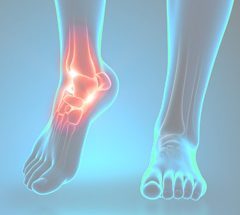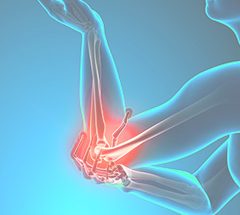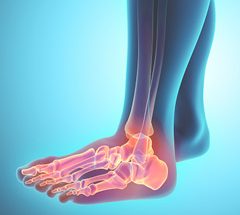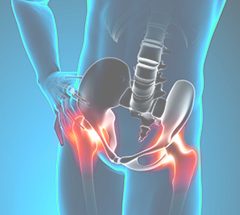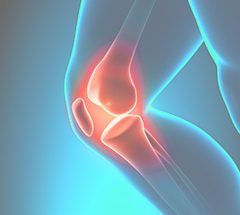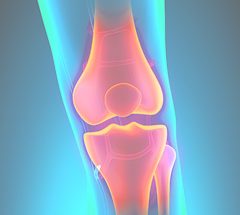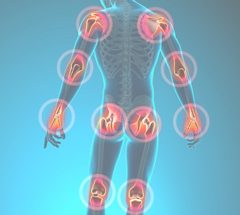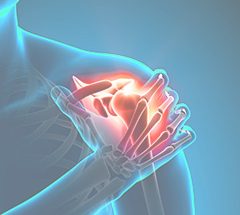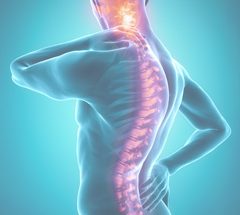Meniscus Surgery
The meniscus is a C-shaped pad of specialized cartilage that functions as a shock-absorber within the knee. There are 2 menisci in the knee joint – one on the inside of the knee (medial meniscus) and one on the outside of the knee (lateral meniscus). The menisci are located between the femur and tibia bones in the knee and distribute weight and reduce friction during movement.

Treatment of meniscal tears depends on several factors including the type of tear, the location of the tear, and the activity level of the patient. If surgery is necessary, minimally invasive arthroscopic techniques are used to either trim out the torn portion of the meniscus (partial menisectomy) or repair the meniscus (meniscal repair).
Meniscal tears occur with twisting injuries to the knee and are commonly associated with ACL tears. They can be due to a traumatic injury, often seen in athletes, or due to a degenerative process in which the meniscus becomes more brittle. The symptoms of a meniscus tear include pain, swelling, locking, and the inability to completely straighten the knee joint.
Meniscus Repairs
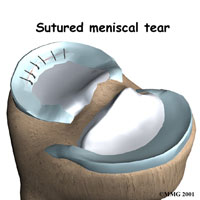 The meniscus is an important structure. It functions as a shock-absorber, helps distribute weight, and protects the articular cartilage. The goal of a meniscal repair is to preserve the meniscus so it can continue to provide its function within the knee joint.
The meniscus is an important structure. It functions as a shock-absorber, helps distribute weight, and protects the articular cartilage. The goal of a meniscal repair is to preserve the meniscus so it can continue to provide its function within the knee joint.
Meniscus repairs are typically reserved for young patients with specific tear patterns. In order for the meniscus to be repaired and heal successfully the tear must be near the outer edge of the meniscus. This is called the vascular zone and is where the meniscus receives its blood supply (nutrients from the blood vessels are necessary for healing). If the tear is not located in the vascular zone, or is complex in nature, a partial meniscectomy is typically performed.
Unfortunately, less than 10% of meniscus tears are repairable. Studies have shown that as high as 40% of patients undergoing a meniscal repair may require further surgery due to incomplete meniscal healing.
Minimally invasive arthroscopic techniques are used to repair the meniscus. Patients who undergo a meniscal repair must be more cautious postoperatively and typically have more restrictions than those undergoing a partial meniscectomy.
Partial Meniscectomy
The meniscus is an important structure. It functions as a shock-absorber, helps distribute weight, and protects the articular cartilage. Tears of the meniscus are very common and affect millions of people annually. They can cause pain, swelling, and locking of the knee.
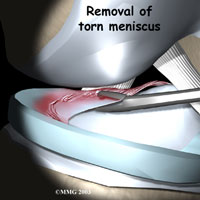 Unfortunately, less than 10% of meniscus tears are repairable (meniscus repair). The surgical treatment for most meniscus tears involves trimming out the torn portion of the meniscus. This is known as a partial meniscectomy. Meniscectomy was originally performed as an open procedure but with the development of minimally invasive arthroscopic techniques, a partial meniscectomy has evolved into one of the most successful and commonly performed orthopedic procedures. During this procedure, only the portion of meniscus that is torn is removed and the healthy remaining meniscus is preserved. The size and configuration of the tear determines how much meniscus is removed.
Unfortunately, less than 10% of meniscus tears are repairable (meniscus repair). The surgical treatment for most meniscus tears involves trimming out the torn portion of the meniscus. This is known as a partial meniscectomy. Meniscectomy was originally performed as an open procedure but with the development of minimally invasive arthroscopic techniques, a partial meniscectomy has evolved into one of the most successful and commonly performed orthopedic procedures. During this procedure, only the portion of meniscus that is torn is removed and the healthy remaining meniscus is preserved. The size and configuration of the tear determines how much meniscus is removed.






